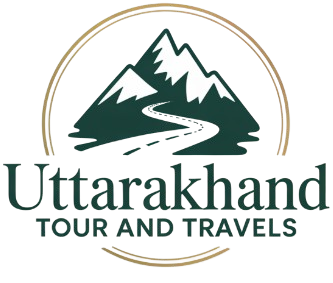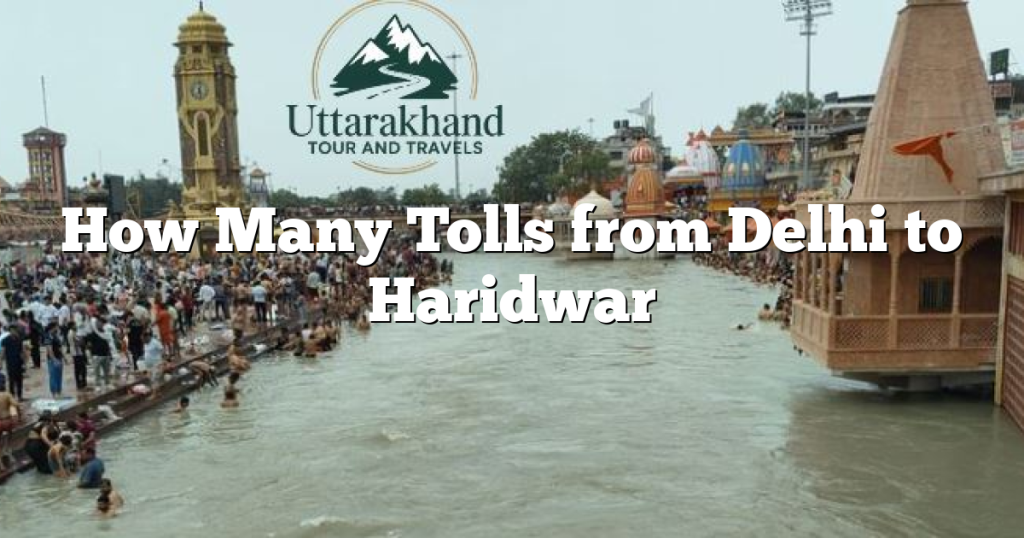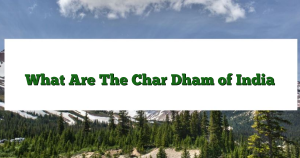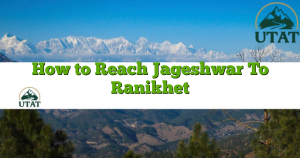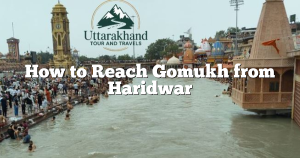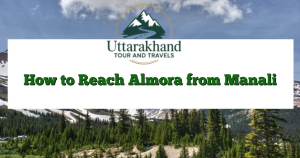Planning a road trip from Delhi to Haridwar? Whether you’re heading there for spiritual peace, a weekend getaway, or simply exploring Uttarakhand, it’s always wise to understand the cost of the journey — especially the toll charges. You may wonder, “How many tolls are there from Delhi to Haridwar?” or “Will I pass through multiple toll booths?” These questions aren’t just about saving money but also about saving time, especially during peak hours or holiday traffic.
Delhi to Haridwar is a popular route in North India, frequented by both tourists and pilgrims. And with increasing traffic on this route, the highway infrastructure has undergone several updates over the years, including new toll plazas, FASTag mandates, and road expansions. Understanding how tolls work on this route, which roads have more tolls, and how you can minimize costs without sacrificing comfort can make a significant difference to your trip.
This article will walk you through everything — from how many toll booths you’ll encounter to how much you’ll spend and whether there are alternate paths you can consider. So buckle up as we break down every aspect of toll travel from Delhi to Haridwar in 2025.
How Many Tolls from Delhi to Haridwar
Route Overview – Delhi to Haridwar by Road
Most Common Route Taken
The most widely used route to travel from Delhi to Haridwar is via the Delhi–Meerut Expressway, followed by National Highway 334 (NH334) and NH58. This route offers a smooth ride, thanks to recent upgrades and expressway features that make driving easier and faster.
Here’s a general breakdown of the route:
-
Delhi – Ghaziabad (via NH9)
-
Ghaziabad – Meerut (via Delhi–Meerut Expressway)
-
Meerut – Muzaffarnagar – Roorkee – Haridwar (via NH334/NH58)
This path typically covers around 220–230 km and takes about 5 to 6 hours, depending on traffic. It is the most reliable and preferred route for its four-lane highways and relatively lower accident risk.
What makes this route convenient is the presence of controlled toll plazas and clearly marked junctions. All toll booths on this path accept FASTag, which significantly reduces the time you spend waiting in queues. As of 2025, this route includes three major tolls that you’ll almost certainly pass through unless you take an alternative route deliberately.
The Delhi–Meerut Expressway also plays a crucial role in reducing congestion through Ghaziabad and provides a seamless transition into NH334, which later merges into NH58 leading into Uttarakhand. This continuity offers a well-paved path without frequent stop-and-go conditions, making it the default choice for most travelers.
Alternate Routes Available
While the Delhi–Meerut Expressway route is the default for most, you do have other route options, especially if you want to avoid toll charges or if you’re exploring scenic travel alternatives. Let’s look at some:
-
Via NH709B and Upper Ganga Canal Road:
-
This takes you through Baghpat, Baraut, and Shamli.
-
It’s slightly longer and not as well-maintained as NH334, but you can skip a few tolls.
-
-
Via Grand Trunk (GT) Road:
-
This old highway goes through Modinagar and Muradnagar.
-
It’s toll-free in some patches but usually takes more time due to dense town traffic.
-
-
Via Delhi Cantonment to Haridwar:
-
A rarely taken route with minimal tolls.
-
Useful for drivers starting from the southwestern part of Delhi.
-
-
Via NH9 to Hapur, then through interior UP roads:
-
This involves more state roads and fewer toll plazas.
-
Not recommended unless you’re familiar with local roads or using GPS navigation.
-
These alternate routes can help you avoid specific toll plazas but come with their own downsides, like longer travel time or rougher road conditions. Still, they’re worth considering if toll cost is your biggest concern, or you prefer scenic detours over fast highways.
Total Number of Toll Plazas on the Route
Route-Wise Toll Count
The total number of tolls you’ll encounter from Delhi to Haridwar depends on your chosen route. On the most common and direct route via NH334 and the Delhi–Meerut Expressway, you will encounter around 3 major toll plazas. These are:
-
Sivaya Toll Plaza
-
Chhapar Toll Plaza
-
Bahadrabad Toll Plaza
Each of these tolls caters to a segment of the journey, and the charges vary depending on the type of vehicle. Cars usually pay a total of ₹260 to ₹300 for a one-way journey, but if you’re driving a commercial vehicle or bus, the toll fees can easily rise above ₹500.
If you take alternate routes with fewer expressway sections, the number of tolls may reduce to just 1 or 2. Conversely, if you deviate onto newer or longer expressway sections, such as detours through Eastern Peripheral Expressway or NH709B, you could face up to 5 toll plazas.
Seasonal and Route-Based Variability
Interestingly, the number of tolls is not always fixed. Some reasons why toll count may vary:
-
Route changes by GPS due to traffic congestion or accidents
-
Road construction diversions that temporarily bypass or add tolls
-
State-level toll exemptions during festivals or special events
-
Newly activated or decommissioned toll plazas
So while the general rule is that you’ll face 3 tolls on the main NH334 route, your actual experience might differ slightly based on real-time factors.
List of Toll Plazas from Delhi to Haridwar
Sivaya Toll Plaza
The Sivaya Toll Plaza is usually the first major toll gate you’ll encounter when traveling from Delhi toward Haridwar via the Delhi–Meerut Expressway and NH334. Located near Muzaffarnagar in Uttar Pradesh, this toll plaza manages traffic coming from multiple directions, especially vehicles heading toward Roorkee and Haridwar.
For most personal vehicles like sedans and hatchbacks, the toll here is approximately ₹110 one way. The infrastructure is modern, FASTag-enabled, and managed efficiently to ensure minimal waiting time. However, traffic can still build up here during weekends and holidays, particularly during the Char Dham season or Ganga Snan events when thousands head to Haridwar.
The importance of this toll gate lies in its strategic location — it filters traffic entering western UP from Delhi while also directing flow toward Uttarakhand. Since it’s part of a broader national highway system, the tolls collected here contribute to highway maintenance and upgrades, including the four-laning of key stretches around Muzaffarnagar.
If you’re traveling during off-peak hours — say early morning or late night — you’re likely to breeze through Sivaya within a couple of minutes. But during daytime hours, especially in summer or around religious festivals, delays of 10–15 minutes aren’t uncommon.
Chhapar Toll Plaza
Next on your journey is the Chhapar Toll Plaza, located between Muzaffarnagar and Roorkee, also on NH334. This toll booth services one of the busiest stretches leading up to Uttarakhand, especially when travelers from western and central UP join in on the route.
The toll for a standard private car is around ₹55 to ₹60, which is relatively modest but adds up when combined with the other tolls on the route. The plaza has FASTag lanes which significantly cut down on wait time. However, manual payment lanes still exist and may cause congestion during peak hours.
The Chhapar Toll Plaza acts as a bottleneck during mass transit days like long weekends or major religious events, so it’s smart to plan accordingly. A quick check on Google Maps before departure can help identify any jams or diversions.
In terms of surrounding amenities, there are basic rest stops and fuel stations near this toll point, so it’s a good spot to refuel your vehicle and grab a snack if needed. The surrounding area is semi-urban, so while not overly crowded, it does see substantial highway traffic.
Bahadrabad Toll Plaza
The Bahadrabad Toll Plaza marks your entry into Uttarakhand, just about 10–15 km before Haridwar city. This is usually the final toll gate on this route and is particularly well maintained, considering it ushers in a massive influx of religious and seasonal travelers.
For private cars, the charge here ranges between ₹95 and ₹125 depending on vehicle size and government revisions. It’s often considered one of the more expensive tolls on the Delhi–Haridwar route, but given the road conditions and cleanliness post-toll, many consider it justified.
FASTag scanners are functional and reliable here. However, traffic here can be erratic — not just because of toll processing but due to the nearby market areas and the influx of local traffic merging onto NH58.
Interestingly, the Bahadrabad Toll is also a signal of arrival — once you cross it, you’re less than 20 minutes away from Haridwar’s main town and ghats. So even if there’s some waiting, you can practically smell the Ganga from here.
Additional Toll Plazas (If Any)
Depending on your starting point in Delhi and the exact route your GPS picks, you may or may not encounter additional toll plazas. Some examples include:
-
Dasna Toll Plaza (near Ghaziabad): If your route includes the Eastern Peripheral Expressway, you might go through this one, with a toll of around ₹45–₹60.
-
Kashi Toll Plaza: Seen in some alternate routes involving NE-3 (Delhi–Saharanpur stretch).
These aren’t part of the standard NH334 route but can appear depending on:
-
Live traffic diversions
-
Route optimization by apps like Google Maps or Waze
-
Your own manual route choice
In general, the number of tolls ranges between 3 to 5, and total cost may go from ₹260 to ₹445 depending on whether these additional tolls are included.
Detailed Toll Charges for Cars, Bikes, and Commercial Vehicles
Current Charges as of 2025
Toll charges are not universal across vehicle types. Here’s a rough estimate of what different vehicles can expect to pay for a one-way trip from Delhi to Haridwar using the standard NH334 route:
| Vehicle Type | Sivaya | Chhapar | Bahadrabad | Total (₹) |
|---|---|---|---|---|
| Two-Wheeler | N/A | N/A | N/A | ₹0 |
| Car/SUV | ₹110 | ₹60 | ₹125 | ₹295 |
| Mini-Bus | ₹180 | ₹100 | ₹190 | ₹470 |
| Light Commercial Van | ₹210 | ₹110 | ₹225 | ₹545 |
| Truck/Heavy Vehicle | ₹280 | ₹160 | ₹280 | ₹720 |
-
Two-wheelers are often exempt from major tolls, especially on NH routes, which makes them cost-effective but not practical for long-distance highway travel.
-
Commercial vehicles have higher rates because of weight, road wear, and legal regulations.
It’s important to note that these figures are updated annually by NHAI (National Highways Authority of India), typically around April 1st each year.
Expected Changes in Toll Rates
Each year, toll prices are revised, often by 5–10% depending on inflation, fuel rates, and infrastructure upgrades. In 2024–2025, a modest hike was implemented to adjust for:
-
New maintenance contracts on NH334 and NH58
-
Integration of more digital FASTag lanes
-
Funding for upcoming expressway extensions
This means that what may cost you ₹295 this year could be ₹315 next year. Keep tabs on NHAI updates or use toll calculators like TollGuru, TollTax.in, or NHAI’s own FASTag app for the latest prices.
Toll Payment Options
FASTag – Mandatory and Convenient
If you’re traveling from Delhi to Haridwar in 2025, having a FASTag isn’t just recommended—it’s mandatory. As per the Indian government’s regulations since 2021, all toll payments on national highways must be made via FASTag. It’s a prepaid RFID tag that gets scanned automatically when your vehicle passes through a toll booth, deducting the toll amount directly from your linked account.
Here are a few things to know about FASTag:
-
Available from banks like ICICI, HDFC, SBI, Paytm, Airtel, etc.
-
You can recharge it online via UPI, net banking, or mobile wallets.
-
Valid for five years and usable across 500+ toll plazas in India.
-
Ensures you pay the lowest possible toll fee (manual/cash payment is penalized with double the charge).
For the Delhi to Haridwar route specifically, all toll plazas (Sivaya, Chhapar, Bahadrabad) support FASTag. If you’re found without an active FASTag, you’ll have to pay double the toll, and in some cases, you might be denied passage during peak congestion.
Another bonus? Using FASTag helps reduce wait time by nearly 70%, making your journey smoother and stress-free. If you’re planning frequent road trips or are part of a taxi fleet, FASTag becomes indispensable. Many travelers even link it to a UPI account for auto-recharge, preventing balance issues mid-journey.
Cash Payments and Exceptions
While FASTag is the norm, cash payments are still allowed at some toll plazas—but they’re discouraged and come with higher charges or limited lanes. During specific situations like:
-
FASTag system failure at toll booths
-
Technical glitches on your tag
-
Government-declared toll-free days
— you may be permitted to pay via cash or card. However, be prepared for delays and longer queues. Additionally, ensure that if you are in a commercial vehicle or rental car, the FASTag account is funded and functional. Rental agencies may not always update tag balances, so double-check before hitting the road.
Bottom line: Cash is not ideal. FASTag is your best bet.
Fuel and Total Journey Cost Including Tolls
Fuel Consumption Estimations
Fuel is the second biggest expense after tolls when planning a road trip from Delhi to Haridwar. The distance ranges between 220 km and 250 km, depending on the route and detours. For an average private car with a mileage of 15–18 km/l, you’ll use about 14 to 17 liters of fuel one way.
Here’s a rough breakdown based on fuel type:
| Vehicle Type | Mileage (km/l) | Fuel Needed (liters) | Fuel Cost (₹105/litre avg) |
|---|---|---|---|
| Small Petrol Car | 18 | 14 | ₹1,470 |
| Sedan (Petrol) | 15 | 17 | ₹1,785 |
| Diesel SUV | 20 | 12 | ₹1,320 |
| Bike | 40 | 6 | ₹630 |
So, for a round trip:
-
A petrol sedan will cost around ₹3,570 in fuel.
-
A diesel SUV would use around ₹2,640 total.
Combining Toll + Fuel for Budget Travel
Let’s summarize the total cost for a round-trip journey for a personal car:
| Cost Component | One-Way (₹) | Round-Trip (₹) |
|---|---|---|
| Tolls | ₹295 | ₹590 |
| Fuel (Avg Sedan) | ₹1,785 | ₹3,570 |
| Total Estimate | ₹2,080 | ₹4,160 |
So, if you’re planning a Delhi-Haridwar-Delhi road trip in your own car, budget around ₹4,000 to ₹4,500 for tolls and fuel combined.
This cost can be reduced:
-
By carpooling
-
Using CNG vehicles
-
Avoiding one or more toll roads via alternate routes
Travel Time and Road Conditions
Average Travel Duration
On a normal day, the trip from Delhi to Haridwar takes about 5 to 6 hours. However, travel time is heavily affected by:
-
Delhi and Ghaziabad traffic congestion
-
Toll booth queues during peak hours
-
Road conditions in Muzaffarnagar and Roorkee
-
Religious holidays or weekends
Using the Delhi–Meerut Expressway cuts travel time considerably in the initial phase, but delays can build up past Meerut due to construction zones or diversions.
Here’s a rough timeline:
-
Delhi to Ghaziabad: 45 mins
-
Ghaziabad to Meerut: 1 hour (via expressway)
-
Meerut to Muzaffarnagar: 1–1.5 hours
-
Muzaffarnagar to Haridwar: 2–2.5 hours
That’s about 5.5 hours under good conditions. In monsoon or during Ganga-related festivals, the trip can stretch up to 8 hours.
Road Quality Along Different Routes
The main route via NH334/NH58 is well-paved and maintained under NHAI. It features:
-
Divided four-lane roads
-
Emergency call boxes
-
Lighting in high-risk zones
-
Good signage
But be cautious of:
-
Sudden speed breakers near townships
-
Jaywalking animals near Roorkee and Haridwar
-
Slower trucks in single-lane zones
Alternative routes (GT Road, Baghpat, etc.) are serviceable but less smooth. These may have potholes, random diversions, and local traffic, slowing you down considerably.
Tips to Save Time and Money on the Journey
Off-Peak Travel and Alternate Roads
Here are practical ways to make your trip more efficient:
-
Travel early morning (before 6:30 AM) to avoid Delhi’s rush hour and shorter toll lines.
-
Use navigation apps with live traffic updates to avoid jams, especially in Meerut and Muzaffarnagar.
-
Avoid Fridays and Mondays — the road is packed with weekend travelers and pilgrims.
-
Use Delhi–Meerut Expressway Phase 1 and 2 to skip city congestion.
How to Avoid Some Toll Plazas Legally
Yes, you can skip some tolls, but only with trade-offs.
How?
-
Take GT Road instead of the expressway from Ghaziabad to Muzaffarnagar.
-
Use Upper Ganga Canal Road (a scenic route that’s mostly toll-free).
-
Exit expressways early and cut through internal village roads — risky if you don’t know the area.
Remember, what you save in tolls may cost you in fuel or time.
